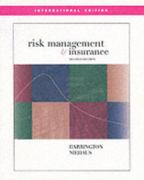Question
Read the following excerpts taken from the Governor of the Reserve Bank of Australia's speech on 21 April 2020. Available in full in text, or
Read the following excerpts taken from the Governor of the Reserve Bank of Australia's speech on 21 April 2020. Available in full in text, or audio here: https://www.rba.gov.au/speeches/2020/sp-gov-2020-04-21.html
Economic forecasting is difficult at the best of times. It is even harder at times like this when we are experiencing a once in a lifetime event. Given this, I don't think it makes sense at the moment to focus on forecasts to the nearest decimal point, as we often do. Instead, I would like to focus on two broad issues:
the immediate outlook for the economy the nature and speed of the recovery.
The next few months are going to be difficult ones for the Australian economy.
One very obvious consequence of the efforts needed to contain the virus is that many normal activities are restricted or not permitted. This means that, for as long as these restrictions are in place, we don't have the jobs and incomes that come from these activities. On top of this, there is a high level of uncertainty about the future, which means that many households and businesses are holding back their spending and investment.
The result of both the restrictions and the uncertainty is that over the first half of 2020 we are likely to experience the biggest contraction in national output and income that we have witnessed since the 1930s.
Putting precise numbers on the magnitude of this contraction is difficult, but our current thinking is along the following lines:
National output is likely to fall by around 10 per cent over the first half of 2020, with most of this decline taking place in the June quarter. Total hours worked in Australia are likely to decline by around 20 per cent over the first half of this year. The unemployment rate is likely to be around 10 per cent by June, although I am hopeful that it might be lower than this if businesses are able to retain their employees on lower hours. The unemployment rate would have been much higher than this without the government's JobKeeper wage subsidy.
These are all very large numbers and ones that were inconceivable just a few months ago. They speak to the immense challenge faced by our society to contain the virus.
[...]
Inevitably, the timing and pace of this recovery depend upon how long we need to restrict our economic activities, which in turn depends on how effectively we contain the virus. So it
is difficult to be precise and it makes sense to think in terms of scenarios. Consistent with this, the Bank will discuss some possible scenarios in the Statement on Monetary Policy in a few weeks' time.
One plausible scenario is that the various restrictions begin to be progressively lessened as we get closer to the middle of the year, and are mostly removed by late in the year, except perhaps the restrictions on international travel.
Under this scenario we could expect the economy to begin its bounce-back in the September quarter and for that bounce-back to strengthen from there. If this is how things play out, the economy could be expected to grow very strongly next year, with GDP growth of perhaps 6-7 per cent, after a fall of around 6 per cent this year. There is though quite a lot of uncertainty around the numbers, with the exact profile of the recovery depending not only upon when the restrictions are lifted but also on the resolution of the uncertainty that people feel about the future.
It is harder to make forecasts about the unemployment rate given the uncertainty about how many employees will remain attached to their firm and whether people who are stood down will be looking for employment and thus be counted as unemployed. But it is likely that the unemployment rate will remain above 6 per cent over the next couple of years. With many firms delaying or cancelling wage increases, year-ended wage growth is expected to decline to below 2 per cent, before gradually picking up again. In underlying terms, inflation is expected to remain below 2 per cent over the next couple of years.
Of course, there are other scenarios as well. On the optimistic side, the restrictions could be lifted more quickly, with the virus being contained. In that case, a stronger recovery could be expected, particularly in light of the very large monetary and fiscal support that is in place. On the other hand, if the restrictions stay in place longer, or they have to be reimposed, the recovery will be delayed and interrupted. In that case, the loss of incomes and jobs would be even more pronounced.
Your Task:
With reference to the speech excerpts above, discuss what the GDP and unemployment figures for the current period are expected to be, and how they might change throughout the remainder of 2020.
Within your answer, make sure to focus on showing your understanding of what the GDP and unemployment figures mean, and that you reference key concepts and use the key terminology that we have studied in this topic.
Step by Step Solution
There are 3 Steps involved in it
Step: 1

Get Instant Access to Expert-Tailored Solutions
See step-by-step solutions with expert insights and AI powered tools for academic success
Step: 2

Step: 3

Ace Your Homework with AI
Get the answers you need in no time with our AI-driven, step-by-step assistance
Get Started


